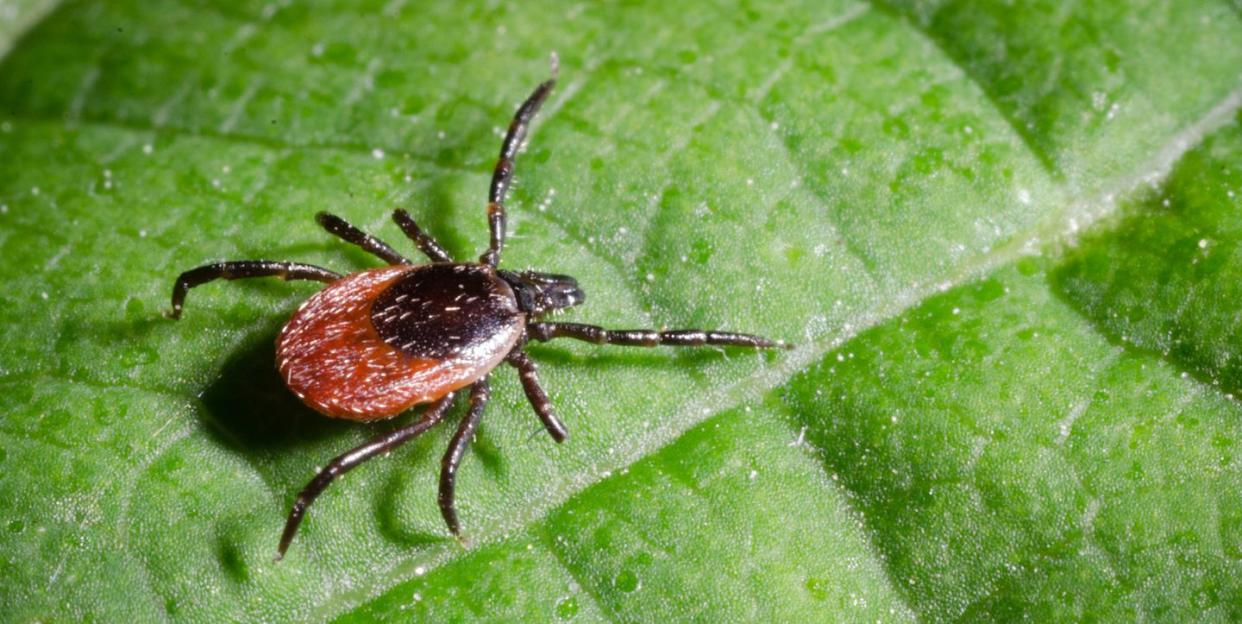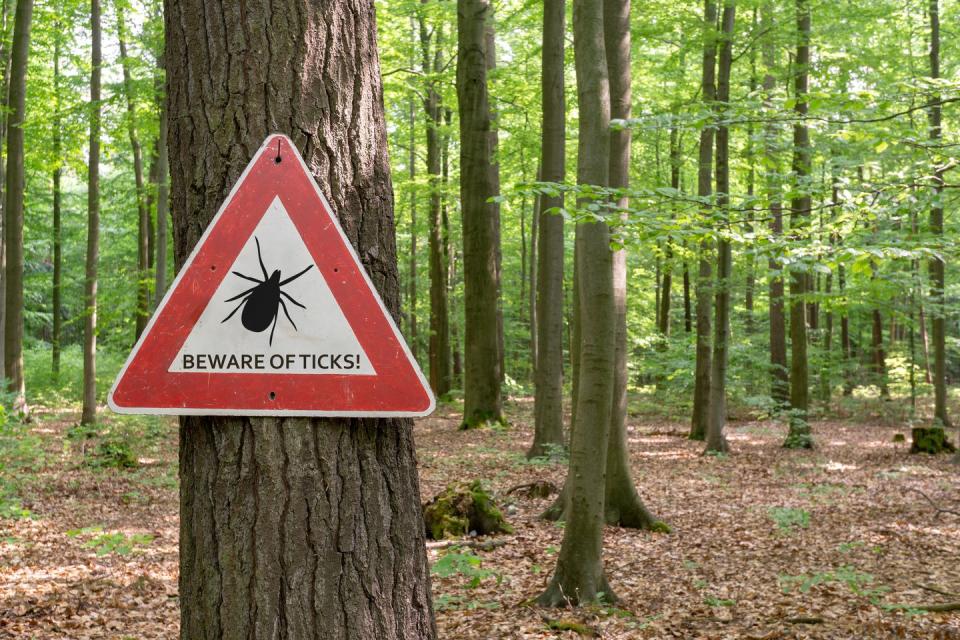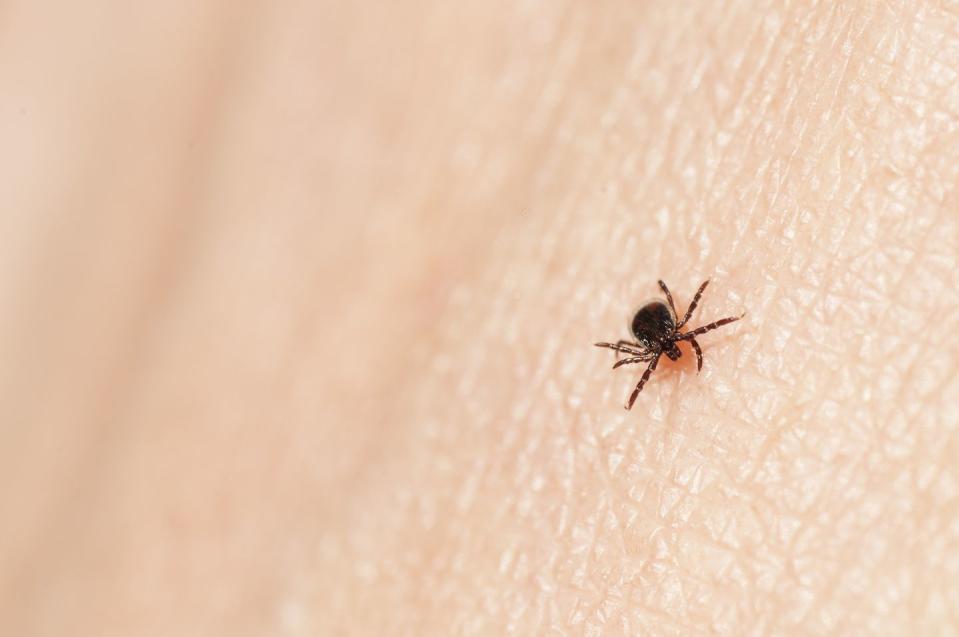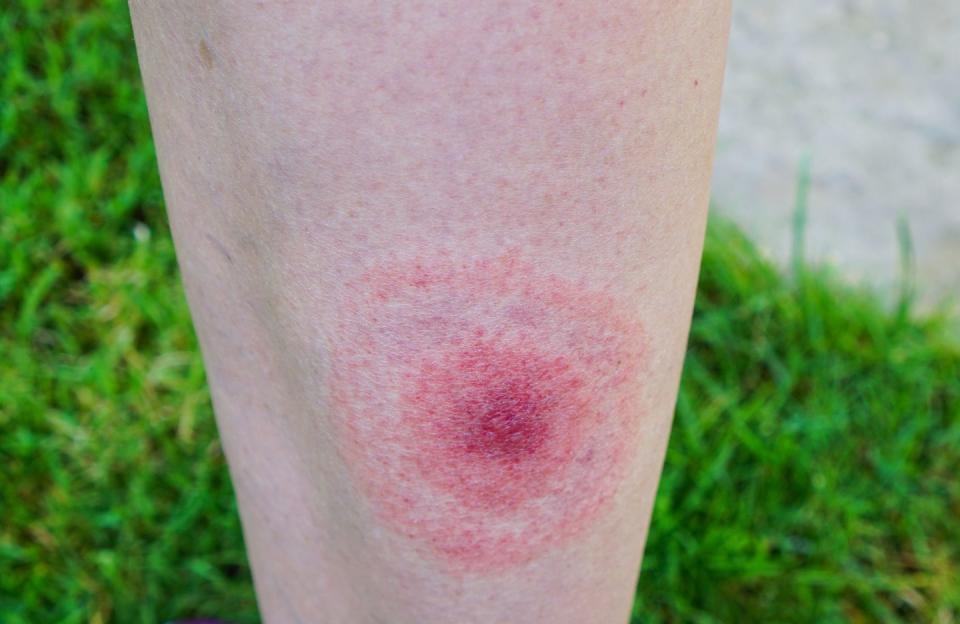Warning: Ticks Are Posing Higher Risks for People and Pets This Year, Experts Say

It's finally the season where we can spend more time outdoors than inside. But if your children, pets, or even you (hey, I don't judge) are known to roll around in the grass or be one with nature when the warm weather hits, you'll probably want to heed this warning from experts: Ticks are biting in full force a lot earlier this year-and in many more areas than normal. But how do ticks get on you in the first place? And more importantly, what does a tick look like?
According to Healthline, the continuous wet weather (i.e. excessive snow and rain) is the reason for ticks coming out earlier than normal. Since it's predicted that these high levels of precipitation will continue throughout much of the United States this spring, Jim Fredericks, PhD, Chief Entomologist for the National Pest Management Association (NPMA), says pest populations will "continue to thrive and multiply."
For this reason, more and more people in various parts of the country need to be on the lookout for ticks on themselves, their children, and their pets, since many species transmit different diseases, the most common being Lyme. Here's everything you need to know to prepare yourself for tick season at home:
What Is Lyme Disease?
Lyme disease is a tick-borne disease "transmitted to humans [and animals] by the bite of infected blacklegged ticks," the CDC writes. The CDC also believes nearly 300,000 Americans get Lyme disease annually.
Where Can I Get It?

Healthline adds that while Lyme disease is most commonly found in the Northeast, Mid-Atlantic, and upper Midwest, health officials have issued warnings in many states across the U.S. for Lyme and other tick-borne diseases-including Indiana, Pennsylvania, and Oregon.
How Can I Prevent Lyme?
According to experts at WMUR 9, the best ways to prevent yourself from being bitten by a tick and contracting a disease is to put on insect repellent and wear long sleeves, long pants. And always check yourself after coming in from being outside. Plus, taking extra care to keep them out of your yard is also important.
To prevent ticks from transmitting disease to your pets, consider giving them preventative medication and Lyme disease vaccinations.
What Does a Tick Look Like?

Chances are you've probably come across a tick, but in case you haven't, Terminix pest control does a great job of describing what you can look for in order to identify them if they're on you, your family, or your pets.
Size: nymphs are about the size of a poppy or sesame seed, and unfed adults are approximately the size of an apple seed or pencil eraser
Shape: flat and oval (unless they've fed, then they're round)
Color: grayish-white, brown, black, reddish-brown, or yellowish, depending on species
Legs: adults have eight legs and larvae have six
Wings: none
Tick Bites and Removal on Humans
The CDC shares that there is, believe it or not, a proper way to remove a tick that has already bitten you. Here's how:
Grasp the tick as closely to your skin as possible using tweezers.
Use steady, even pressure to pull up without twisting or jerking.
Then, use tweezers to remove the mouth, if that didn't come out with the rest of it. (Gross, I know.)
Clean the area thoroughly with rubbing alcohol or soap and water.
CDC TIP: Do not crush the tick with your fingers! Instead, put the tick in alcohol, place it in a sealed bag or container, wrap it tightly in tape, or flush it down the toilet.
What Are the Symptoms?

MayoClinic shares that the most common early signs and symptoms for Lyme disease are:
"Bullseye" rash (erythema migrans)
Fatigue
Fever
Chills
Body aches
Headache
Neck stiffness
Swollen lymph nodes
If left untreated, Lyme disease can cause more serious health effects, like neurological and heart problems or eye and liver inflammation. Consult your doctor if you think you may have been bitten.
Editor's Note: From experience, you may not ever find a tick on you or even see a rash. If you have other symptoms that may be linked to a tick-borne disease, contact your doctor.
Follow House Beautiful on Instagram.
('You Might Also Like',)

